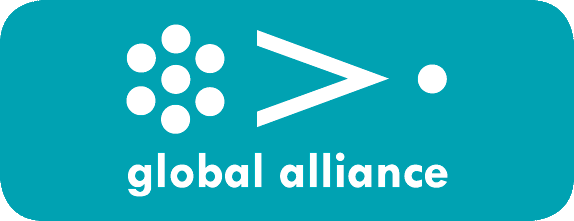Building the future workplace with allyship and inclusion
During June – the official Pride month – we see companies raising rainbow flags and showing their support for the LGBTQ+ community. Still today, in 2023, members of the LGBTQ+ community are facing discrimination, both in the workplace and in society at large. Pride serves as a yearly reminder of this and of the fact that equal rights call for continuous attention and action from all of us.
An issue that often comes up when talking about organizations participating in Pride and walking in the parade is that of pinkwashing, meaning that companies declare themselves to be an ally to the LGBTQ+ community, but do not “walk the talk”. Having diversity as a company value needs to be lived up to every day, it needs to be visible in the company life; Do our leaders give room to the diverse voices – are we including even those whose voice is not the loudest? How do we treat people - what kind of behaviors do we accept, and do we act as role models ourselves?
From the more formal processes perspective – do we have a company ethical guideline – Code of Conduct in place, with clear statement of zero tolerance for any discrimination? Has this been communicated, and people trained on it? Do we have a process for whistleblowing, safely reporting any concerns, in place? In a global corporation it is all about creating awareness – adapting - learning and improving, as our knowledge and understanding on diversity and inclusion grows and matures.
How can we as professional communicators drive inclusion in workplace?
While clear ambitions and commitments from companies’ top management are required, we as communications and marketing professionals should also think about our role in making all our colleagues feel safe and appreciated as they are. Are we using inclusive language in our communications? Does everyone have equal access to our communications channels? Are the e.g., diverse nationalities, ethnicity, ages, and genders well presented in our photos – or diverse groups of people invited into our workshops and events?
Continuous and visible work for building awareness and training people to recognize unconscious biases we all have is required to make a change happen in big organizations. But even more than that, we need allyship; A good allyship starts from consciously recognizing our own ways of thinking and individual biases. Each one of us has a distinct set of experiences that makes us the unique persons who we are. Allyship is about willingness to learn and advocate for minority groups. In any big corporation - allyship is needed on all levels – awareness and inclusion on team level but also on corporate level to drive the change through established policies, processes, and formal ways of working. This is not happening – unless there are passionate allies driving the work, keeping the dialogue alive and pushing the organization towards greater maturity as an inclusive workplace, step by step.
Let’s recognize the privileged positions many of us have – be the allies for the underrepresented groups to learn and to advocate – and build a more inclusive working life. Businesses have the power to make an impact. Participating in Pride may be one visible and important way to show support to diversity, human rights, and equal opportunities. This, however, is not enough. Equal opportunities – for everyone to be seen and accepted just as they are is essential not only in June - but all year round.
Kia Haring
Head of Communications, Brand & Sustainability at Tietoevry
Member of the Executive Board at Global Alliance, Director of Ethics and Standards
Article published as part of Global Alliance Diversity, Equality and Inclusion Month 2023.
Any thoughts or opinions expressed are that of the authors and not of Global Alliance.


